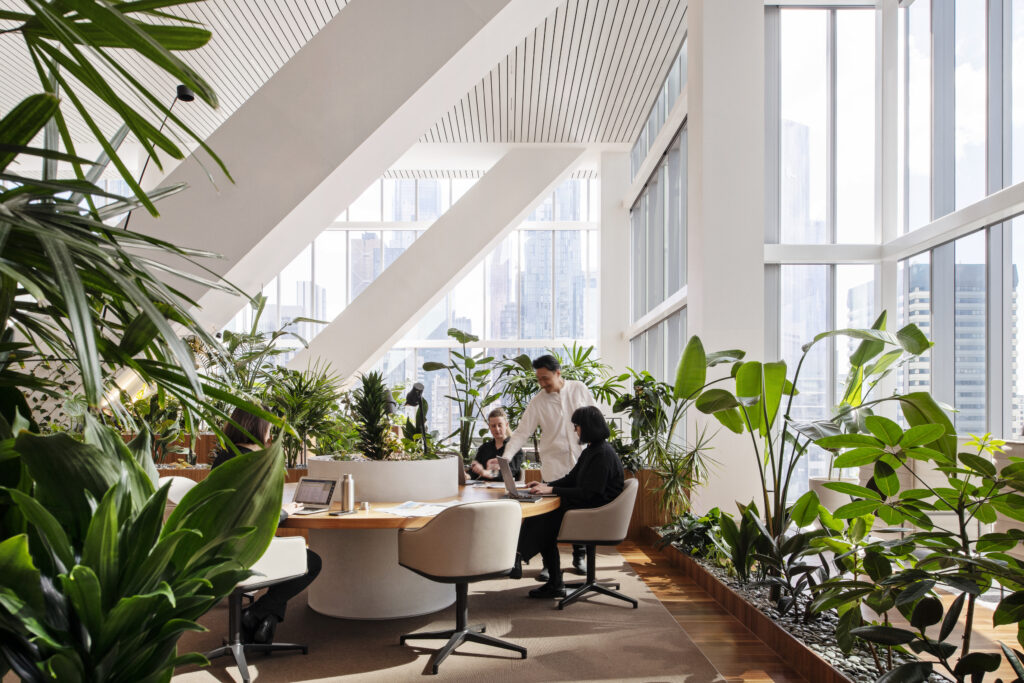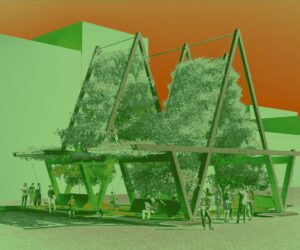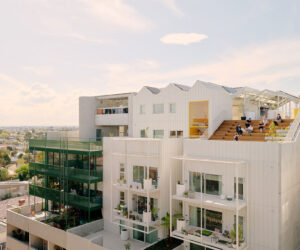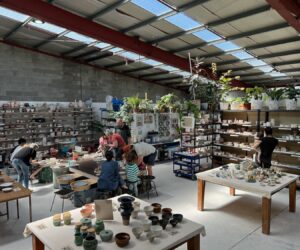New Research Into Green Spaces in Buildings & Workplaces Revealed
A new report by international design practice Hassell, From Office to Oasis outlines the commercial realities of greening a workplace and the key considerations for landlords, developers and occupiers.
In workplaces across the world, employers are looking for ways to entice employees back to the office. High on the wish lists of many employees — and prospective workplace tenants — are green spaces, which include everything from green roofs to terraces, winter gardens, and indoor planting.
In the report, which surveyed landlords, developers, designers, and workplace tenants Hassell Senior Researcher Dr. Daniel Davis uncovered valuable insights into the most successful design strategies for adding green spaces to office buildings. “Green spaces aren’t always cost-effective,” says Dr. Davis. “They can be expensive to maintain, and if they’re poorly designed, they often sit unused. By publishing this report, we hope to provide answers on how to make green office spaces places that benefit tenants, the environment and the bottom line,” says Dr. Davis.
The report is a deep dive into the finding from Hassell’s 2022 global workplace survey that fresh air and green space are the two most desired amenities in offices across Australia, China, Singapore, the United Kingdom, and the United States. It highlights the trends driving the desire for green workplaces from attracting employees and entertaining clients to improving employee wellness and productivity and meeting environmental commitments.
Amongst the report’s key findings are:
- Tenants are paying a premium for green space. If a tenant has exclusive access to a rooftop, they’ll typically pay a premium. (In 2019 CBRE calculated the premium for an outdoor space was 14% in New York.)
- Urban greenery boosts property prices. Rent premiums for offices with street-level greenery is 7.8% compared to 5.6% for those with no greenery. (Source: MIT Real Estate Innovation Lab, USA, 2021.)
From Office to Oasis provides checklists on how to get greenery right — and what to do when greenery goes wrong. Case studies show the importance of diverse outdoor spaces, how climate impacts these spaces and how to create productive outdoor workspaces.
The three key ways of adding greenery to a workplace are:
- Rooftops and Terraces: One of the most common ways to turn otherwise unused space into a valuable amenity. The best rooftops and terraces are more than places to access the outdoors. They offer variety. They have a range of spaces for different activities, whether that’s collaborating, eating, resting, or working out.
- Winter gardens: Plant-filled conservatories that sit just behind a building’s façade, winter gardens can be used year-round in most climates. For landlords and building owners they also have the advantage of being counted as part of a tenant’s Net Lettable Area (NLA).
- Indoor plants: A simple and cost-effective way of adding greenery to an interior space. Recent research shows that indoor plants were consistently shown to boost workplace productivity anywhere from 6 to 35%.
Dr. Davis says engaging workplace tenants early in the design process, making sure you’re set up for ongoing maintenance and operations, and hiring a designer that has done something similar and understands the challenges are just some of the ways to create a successful green space. “During the lockdowns of recent years, we became used to working outside on our terraces, in our backyards and being immersed in nature,” says Dr. Davis. “As a result, a green space is now high on the list of priorities for workers thinking about returning to the office.”
“If you want to design a green space that works, and entices people back to the office, this report provides the answers,” says Dr. Davis



